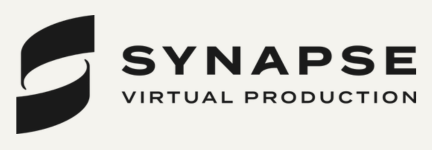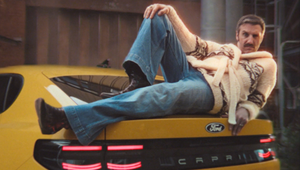
Editing in Jungles, Deserts and the World’s Finest Car Parks with Leo King

Leo King is a multi-award-winning commercial editor, and a co-founder of Stitch Editing, a high spec studio in the heart of Soho, London.
Founded in 2010, the company specialises in editing commercial content, music videos and short films, as well as developing the next generation of editors via Homespun, a platform for assistant editors to hone their craft with up-and-coming directors and producers, which Leo and co-founder Tim Hardy launched in 2014.
Stitch prides itself on high quality craftsmanship and being a reliable guiding hand through the post production process – with a strong emphasis on nurturing a relaxed working environment that supports collaboration.
And these days, says Leo, this collaborative process is no longer confined to a single location. Speaking to LBB, Leo shares insights into his experiences editing across the world, and how he’s overcome the challenges that this workflow presents.

Above: Leo editing on set
My workflow is often spread across different countries and time zones. As the owner of Stitch, I’ve seen first-hand how this shift has brought both challenges and exciting new opportunities.
I’ve had the chance to edit on set in some wildly diverse locations – remote jungles, African deserts, and many of the world’s finest car parks. Each one has its own set of logistical hurdles. Editing on set in the desert, for example, meant dealing with 50-degree heat and being four hours from the nearest city. At one point, my hard drives started overheating, so we had to rig up fans just to keep them running. I was wearing shorts, sliders, and no t-shirt around clients – definitely not my usual edit attire!
Beyond the technical stuff, there’s the personal side too – being away from home, long haul flights, juggling time zones. But the upside of editing on set is huge. Being able to give the director instant feedback whilst they are shooting can be a massive help. They can actually tweak what they are shooting based on the edit in real time, which creates this super responsive workflow where editing becomes part of production itself.

I’ve also worked as a local editor in markets like the US, Germany and France, and the editing process can be different depending on where you are. In the US, for example, directors are often less involved in the editing, which puts more of the creative decisions on me. In the UK, the directors are more closely involved in shaping the edit throughout. So I adjust my approach depending on the project and culture, striking that balance between my own creative voice and the director’s vision.
I’m really fortunate to have a US work visa, which opened a lot of doors for me – like signing with The Den, an incredible US-based edit house. That partnership’s led to some amazing collaborations and projects I might not have had access to otherwise.
One of the biggest shifts I’ve seen recently is the rise of remote editing, especially since the pandemic. Before, editing over Zoom was almost unheard of – now it’s totally standard. It’s made international work way more accessible and flexible. Hybrid jobs have become the norm: flying out for part of the project, then finishing remotely. It’s not only more cost-effective but also makes it easier to work with teams from all over.

You can get creative working around different time zones. When I’m in the UK, I can adjust my schedule to a US time zone, starting the work day around noon and working later. The time difference can also work in our favour, where I can edit during the day UK time, the clients review it overnight, and I have feedback the next morning.
That said, there’s perks of being in the room together. The creative flow that comes from in-person collaboration is hard to replicate over Zoom. People generally try to avoid spending long hours on virtual calls so they will be broken up throughout the day. You can miss out on the energy that comes from being physically present in an edit suite, sharing coffees and lunches with clients, and engaging in spontaneous creative discussions.
A good example of how this hybrid model can work is a recent Doordash Canada spot I cut. It was directed by my long-time collaborator Nick Ball, who’s based in LA, with Canadian agency Hard Work Club. We shot in Prague, and I was on set.
Being so dance-driven, the spot really benefited from the ability to cut in real time. After the shoot, we continued the edit remotely from London, working across three time zones. The whole process ran really smoothly, and I think a big part of that was having shared the same space on set first; it laid the groundwork for a much more fluid remote collaboration.
At its best, editing across borders has opened up amazing opportunities for collaboration and creativity. Working with people around the world brings in a range of ideas and perspectives. But of course, there are still challenges – juggling logistics, adapting to different workflows, managing time zones. For me, the key is embracing the flexibility that remote work offers while still valuing the irreplaceable benefits of being together in the same space.
It’s a new way of working that’s opening up some brilliant opportunities.















